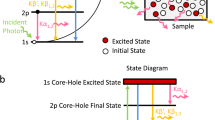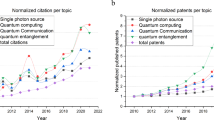Abstract
WHEN electrons are diffracted by a crystal cleavage face, Bragg's law, on taking account of the refractive index of the crystal for the electron waves, becomes or, putting and where θ is the inner potential of the crystal and V is the energy of the electrons in volts, we obtainFor a spacing 4 A. the first order will thus disappear entirely for θ as small as 2.4 volts, whatever the value of V. This wide variation from Bragg's simple law, then, will be quite as marked for high as for low voltages, and since swift electrons are less liable to be deviated by stray fields, etc., the high voltage method ought to be the more suitable for determining θ. The surprisingly large effect of refractive index at these high voltages depends on the very small angles of refraction which occur, and is only strongly marked when the reflecting plane is the free surface of the crystal. This effect has been pointed out by Prof. G. P. Thomson (Phil. Mag., 6, p. 939; 1928).
Similar content being viewed by others
Author information
Authors and Affiliations
Rights and permissions
About this article
Cite this article
EMSLIE, A. Determination of Crystal Potentials by Diffraction of High Voltage Electrons. Nature 123, 977–978 (1929). https://doi.org/10.1038/123977b0
Issue Date:
DOI: https://doi.org/10.1038/123977b0
- Springer Nature Limited





